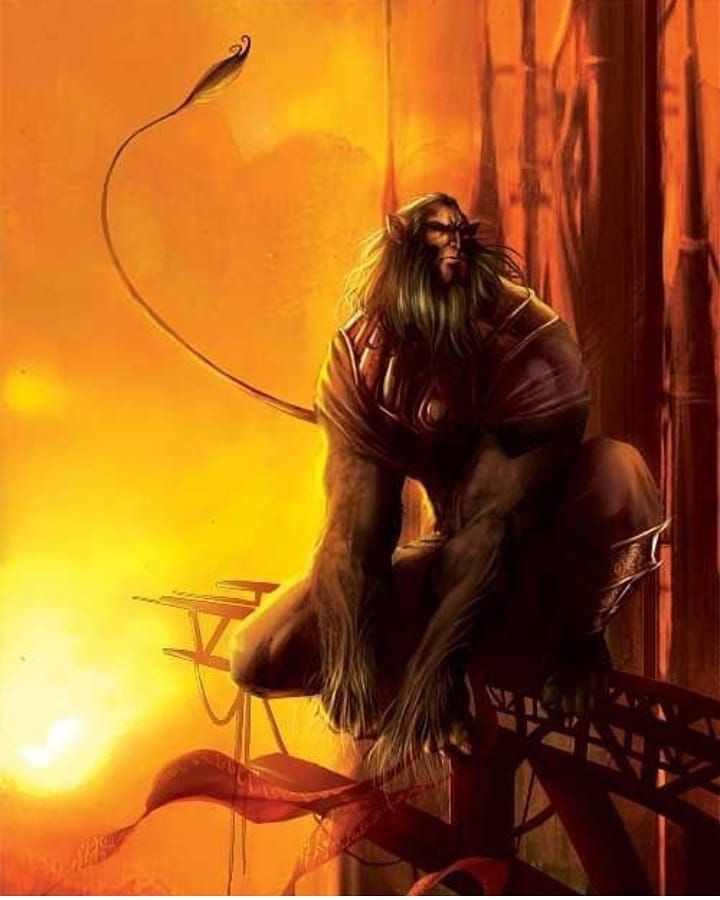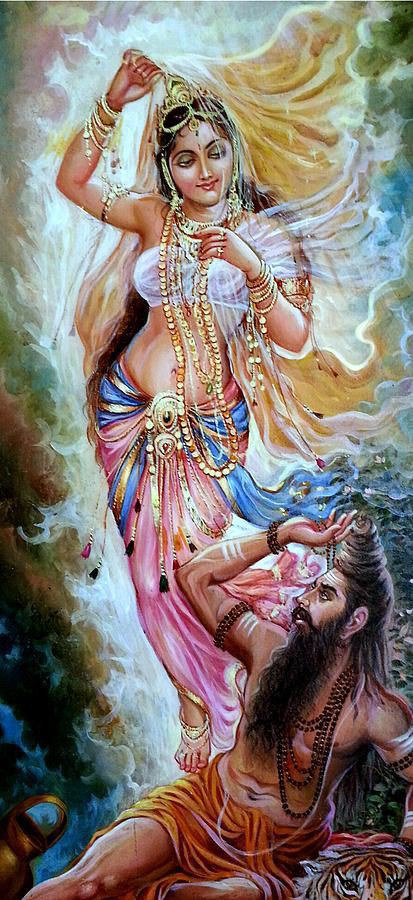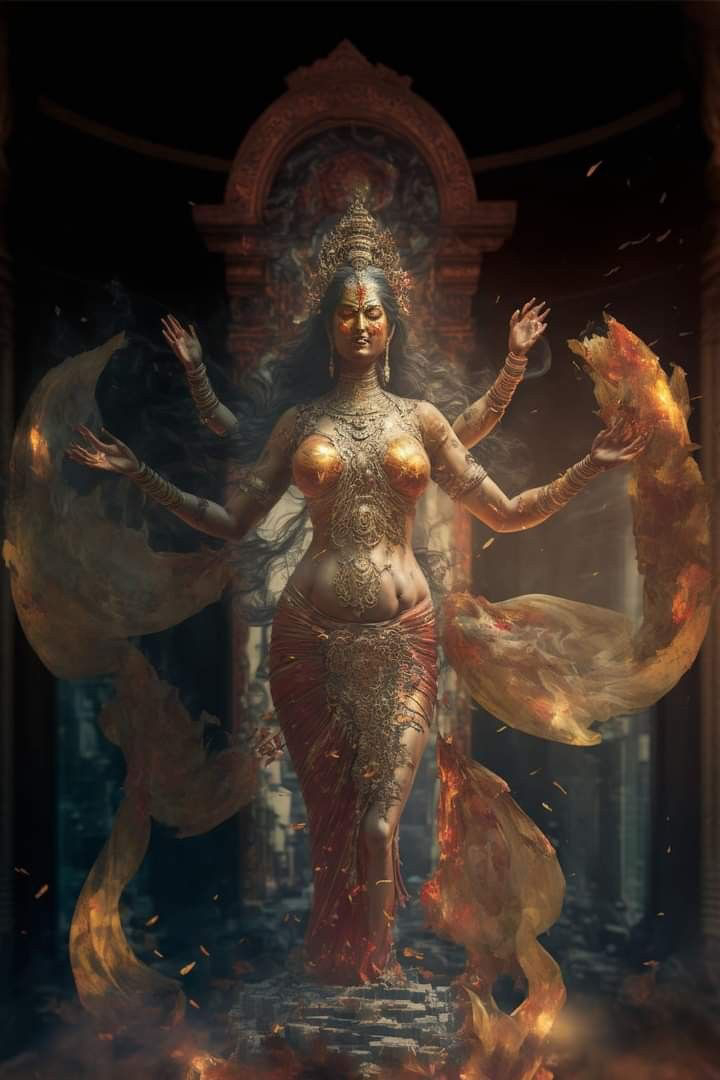 Dwivida, Vanara who survived from Ramayana era was killed by Balarama as mentioned in Bhagavata and Vishnu puranas.
Dwivida, Vanara who survived from Ramayana era was killed by Balarama as mentioned in Bhagavata and Vishnu puranas.
He, along with Mainda were son of devas Aswini brothers. Both brothers participated in the coronation of Sugriva (Valmiki Ramayana 4.26.34).
Dwivida was sent by Sugreeva along with Angada, Hanuman, Jambavan in south direction to search for Sita. Dwivida a boon obtained from Brahma.and by defeating gods he drank the nectar, withthe permission of Brahma (Ramayana 6.28.6-7). He fought at the east gate of Lanka under the command of Neel and killed few rakshasas.
Dvivida and Mainda survived in Kishkinda and they fought with Sahadeva (5th brother in Pandavas).
Sahadeva, the Pandava general, and younger brother of Pandava king Yudhishthira, came to southern regions to collect tribute for the Rajasuya sacrifice of the king.
Sahadeva reduced to subjection king Vatadhipa. He then defeated the Pulindas (in the south), and the hero then marched southward. He then fought for one whole day with the king of Pandya. The long-armed hero having vanquished that monarch marched further to the south.
And then he beheld the celebrated caves of Kishkinda and in that region fought for seven days with the Vanara-kings Mainda and Dwivida.
Those illustrious kings however, without being tired in the encounter, were gratified with Sahadeva.
During his conquer of south, Sahadeva defeated Pandyas, Andhras and also met Vibhishana at Lanka, who accepted Yudhishtira as emperor and gave away gifts from his side.
Dwivida was friend of King Naraka. After Naraka was killed, Dwivida tried to enter anarta, where Krishna and Balarama lived (Dwaraka).
He would create disturbances by entering sea and forcing waters into the villages.
He would destroy the hermitages of the Sages. He would destroy the forests and fields. He would steal people and push them into the caves and seal the entrances trapping innocent people and creating terror.
Vanara Dwivida killed by Balarama
Once when he was engaged in destructive activities, he heard a sweet song from Raivataka Mountain and he went there. There he saw Balarama, elder brother of Krishna intoxicated and playing with Gopis.Dwivida climbed a tree and made him visible by making monkey noises.
The women with Balarama saw the vanara and laughed at the anticipated tricks.
Dvivida dodged the stones and broke the pot carrying food and pulled at Gopis garments.
Even more infuriated, realizing that same Dvivida has caused disturbances in the province, Balarama took up his club called Sunanda and his plough to put an end to Dvivida.
Dvivida too now took up the battle in earnest. Grabbing a Sala tree and he rushed at Balaram to hit him.
Balarama took the blow and pulled the tree from his hands and struck Dwivida with his club.
Hit on the head, with blood oozing, Dwivida took up one more tree to attack Balaram, who smashed that tree also to pieces.
Dwivida continued his battle with stones, raining a host of them on Balarama Finally with all his tricks being frustrated, Dvivida came to a hand to hand fight with his fists. He was no match to Balaram.
Then Balarama hit him with his fists breaking his collarbone. Finally Dwivida collapsed and died.
The Devas from the skies raised victory chants.
Having killed Dwivida who created disturbance for the whole world, Balarama entered the city of Dwaraka being glorified with victory chants amid chanting of prayers too.
What happened to Vanaras post-Ramayana era
Uttara Ramayana mentions that, when Rama decided to leave his human body on earth, Sugreeva coronated Angada as king of Kishkinda and reached Ayodhya along with many other Vanaras.
They told Rama: “O Rama, foremost among men, if you depart for heaven forsaking us all, it will be akin to hurling Yama’s rod upon us.” The highly powerful Sugriva too saluted Rama, saying: “O lord of men, having placed Angada on the throne, I have come hither. I am determined to follow you, O King.”
Hearing the words of the Vanaras, Rama agreed to fulfil their wishes. He tells Hanuman, “It is settled that you shall live forever. As long as my history is spoken in this world, you will also be praised“.
Being thus addressed by his beloved Master, Hanuman was delighted, and said, “As long as the sacred theme (Ramayana) is present in this world, I shall live here, carrying out your command.”
Hanuman tells Jambavan, Mainda, Dwivida and other Vanaras: “You all will continue to live.“.
Thus, Sugriva and other Vanaras departed the Earth along with Rama.
Hanuman, Mainda, Jambavan, Dwivida, and five other Vanaras (including Nila and Nala), were supposed to continue living. Out of these, Dwivida was killed by Balarama.
Jamvana survived to fulfill his desire to fight Rama (as Krishna) and offered his daughter Jmbavati as wife to Krishna.
Hanuman continued to live and also met Bheema, Arjuna during their forest exile period. (32nd century BCE).
Vanaras were found to have existed in Egypt (23rd century BCE), which is just 900 years post Kurukshetra war.
Kishkinda Kanda of Ramayana mentions that Sugreeva ordered all Vanaras across the globe to assemble in Kishkinda, before they took off for Lanka to wage a war against Ravana.
About 20 million Vanaras of various skin colors, heights, personalities (including 2 million from the race of Jambavan) attacked Lanka.
Post war, most of them returned to their native places and egypt could be one of them.
























